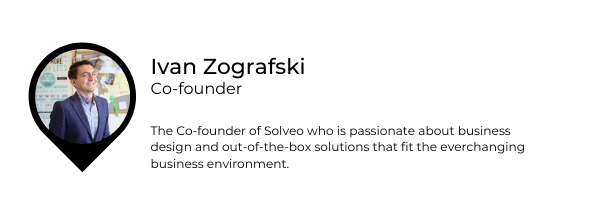Contents
If my years of experience in leading an innovation agency have thought me anything, it’s that not enough managers and leaders understand what exactly drives innovation. In an attempt to rectify that, I wrote this 2 part comprehensive article to discuss innovation in dept, and expose the real ingredients of innovation.
Here is a summary of the topics I will cover:
Part 1:
Why we need innovation?
What is innovation? (and the 3 types of corporate innovation)
What forces drive innovation?
Part 2:
How to choose the best innovation process?
Delivering excellence through ambidextrous leadership
How to evaluate innovations?
Unleashing the solution (Commercialization)

Why we need innovation?
In the words of one famous innovator, Innovation distinguishes a leader from a follower.
We have to accept that because of technology, everything in our world is faster now. From transportation to communication, the pace of change is speeding up. With new technology and startups popping up every day, it’s not a surprise that over 40% of fortune 500 companies will be wiped out in the next decade.
The reason for their failure will be a combination of their inability to adapt fast enough, and the inability to outpace other, smaller and more agile companies that will take their leadership position. But, can they be blamed?
It’s easy to keep a team of 20 in line with new developments, but try 200. Or 2000. Furthermore, it’s not enough to keep pace with the crowd – you need to lead it. And staying relevant is impossible without innovation.
Aside from the need to keep a competitive advantage publicly, innovation is also important for improving processes and reducing costs internally. And on top of that, it’s human nature to seek a better way of doing things.
We are problem solvers that dislike change but also, need it. Progress is essential for our survival, and we need innovation to keep us moving forward.
What is innovation?
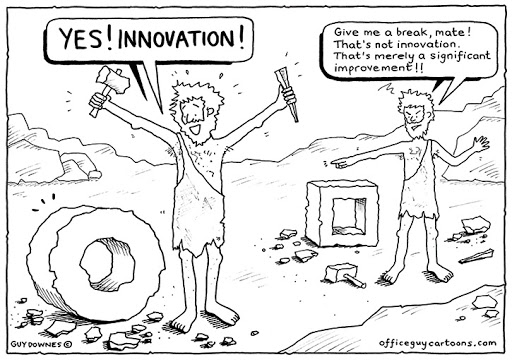
There is a lot of misconception around what is and what is not innovation. Just like most of the words in the English language, the word “innovation” also comes from the Latin innovare. The word’s origin has a few interpretations depending on the context, that could help us shed light on this mystery. As expected, one of the definitions is “to make something new” but the other, perhaps more surprising is “alter, renew, or, return to”.
Translated into modern terms, that means that innovation isn’t just invention, but also improvement (or reinvention). While there is a clear distinction between the two, they are still, undisputedly, innovation. Simply put, innovation is change (big or small) that unlocks new value.
Types of innovation
1. Developmental innovation
Also referred to as incremental innovation, is the type of innovation that adds improvements to existing products and solutions. We can see great examples of this in the Food and Beverage industry where companies change their product packaging every few years, adding a new mechanism to the lid or similar minor alterations.
These alterations do, however, make the customer have a better experience using the product, or, make the packaging cheaper or easier to produce.
Take for example the Heinz Ketchup. From the first plastic up-side-down packaging they introduced in 2002, to their 2019 leaning label glass bottle that shows the angle we should poor the ketchup at, Heinz constantly innovates in small ways to make our ketchup experience great.
These innovations do not require major changes, nor do they call for a large investment in resources, but they still distinguish their products from those of the competition.

2. Exploratory innovation
As the name suggests, this type of innovation is the equivalent of going into uncharted territory and coming out with a new invention. Exploratory innovations are also called disruptive, or radical because they introduce something entirely new.
Comparing developmental innovation to exploratory is easies when we think about the phone. From the first phone (ever) to the first mobile phone, and the first smartphone, all 3 innovations can be considered exploratory. After all, they completely changed the way that we communicate, and also, landed their creators a safe spot in the history books.
But exploratory innovation is not about glory. It is about creating a better world. And in the game of business, it’s also making a big step ahead of the competition, and genuinely exciting our consumers and the customers of our competitors as well).
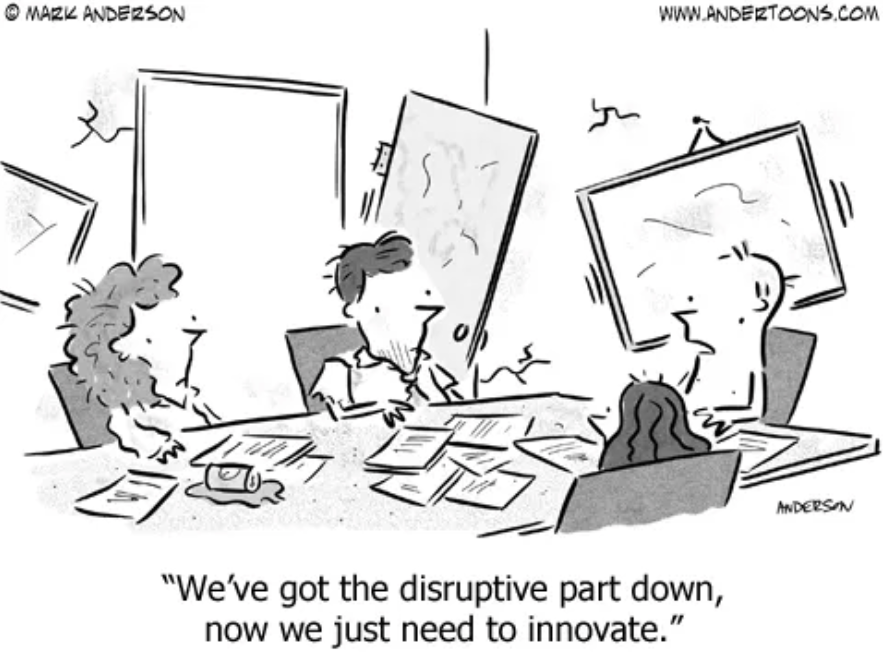
3. The forgotten type of innovation
When we think of innovation, we often think of gadgets or technology. But we almost never think about the type of innovation that goes on entirely behind the scenes, even tho this type of innovation is just as meaningful, bold and genius.
Business model innovation is a new way we can make a business “work” better. It’s the reason why Pepsi is making more money than Coke, winning the game of revenue. Somebody in the company realized that they can use the same distribution channel to sell snacks as well as carbonated drinks.
It’s also why Apple makes an additional profit from digital stuff it sells through its physical products and the reason why Facebook, Youtube, and Google are free. Especially in the digital age, we have seen a plethora of new business model frameworks, from subscription services to premium features upgrade. It’s safe to say that without business model innovation, we would be living in a very different world today.
What forces drive innovation?
However different these types of innovation might be, there are driven by the same organizational forces. How innovation happens depends on these 3 factors.
1. Long-term Goals
A company does not become innovative in command. It’s a longterm process that we need to plan and prepare for. But many managers struggle to balance present objectives with future innovative demands. This is because innovation requires resources, processes and an overall cultural shift – all influenced by the goals we have and the decisions we make.
When making long-term strategies, I always advise my clients to use the Three-box Solution by prof. Vijay Govindarajan (image below). Working on new innovations, while running a highly-performing business at the same time is a challenging quest, but with this model, decisionmakers can think about it without getting a headache.
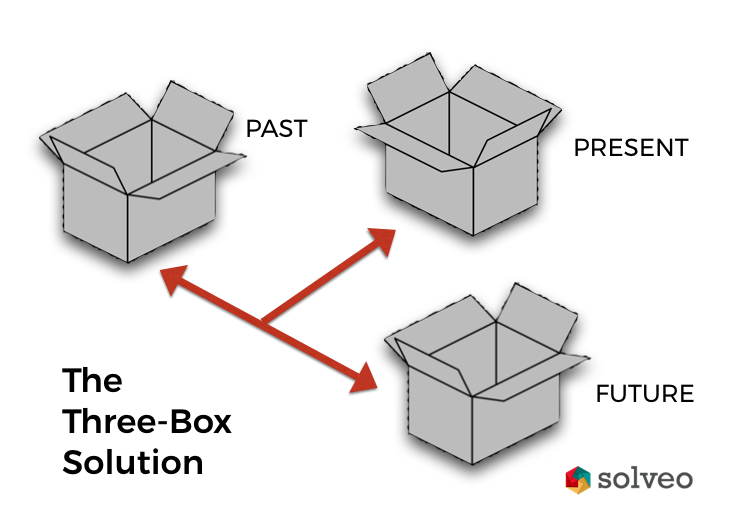
Buy compartmentalizing processes, activities, and goals in these 3 boxes, you can determine which processes (that might have worked in the past) need to be replaced with different ones to serve future aspirations. You also need to organize and optimize present operations to make room for innovative action. Lastly, you need to set long-term goals and a clear vision for the future, because vision drives change.
In your plans, be sure to allocate funds and other resources to Innovation. If you are looking to create a radical innovation, be aware that you will need an action team (or teams) that will work on those projects fulltime. They will also need assistance from other departments, so take that time investment in the account as well.
Lastly, make sure that there is one person in charge of the action team, one that will serve as a mitigator between them and the rest of the organization (from decisionmakers to other managers). Take everything else off his plate, because this will be a fulltime job, and because you want his sole focus to be on the new project.
2. Creating the right conditions for Innovation
To every innovation, there is first, the idea, and then, the execution. Both require specific conditions. Let’s evaluate them separately:

Ideation: Don’t expect scared employees to come to you with radical ideas, It will never happen. Employees need to feel safe bringing up issues and ideas about improvements. Not only do they need to feel safe – but they need to be stimulated to do so.
We can do this by serving as a good example, being transparent and communicative, and also by rewarding this behavior with public praise. Only then can we expect to get good ideas from the people most likely to have them.
Execution: Don’t expect employees to give 100% on a radical project if they are scared to fail. If you are starting to see a pattern here, it’s because there is one. Fear drives inaction. Fear is the antidote to innovation.
To innovate, we must stop being afraid of failure. When working on things that, frankly, we’ve never worked on before, the likelihood that we will do something wrong is so high, it is almost guaranteed.
In order to dilute the debilitating fear, we need to do something radical: we must promote failure. Alexandre Janssen’s brilliant idea how to do this was to give his innovators an “I f**ked up card”, and tell them that if they didn’t use it within the year, they would be fired.
Don’t be quick to think that what he did is too radical, especially if you too want radical innovation. It’s actually one of the most simple and effective ways to empower failure, and as a result, drive innovation.
These conditions that subliminally foster innovation are also known as company culture. Culture, just like in society, in a set of unwritten rules that everybody in the organization follows. It is mostly influenced by the founder, and the subsequent leaders put in positions of power.
If you would like to learn more about growth-oriented company culture (and how we built it at Solveo), read this insightful piece that my business partner Dragana Neshovska wrote on the topic.
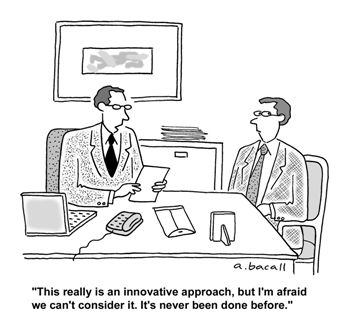
3. The Innovators
Innovation is all about people. The people who we innovate for, and the people who we innovate with. The Innovators are people – employees, managers, and consultants. You cannot innovate if you don’t have the right kind of people doing the task. But, how do you know who is right for the job?
Creativity is not the driver of innovation. Creative people can come up with all sorts of ideas, but execution comes down to the possession of a different trait: Passion.
The biggest mistake managers make is that they select based on experience. But innovation is about doing with something that has never been done before, and it’s not difficult to see how experience is not the best prerequisite to look for. Instead, when hiring, or selecting people for your action teams, look for initiative, interest, and desire.
Now you have the right strategy, the right conditions, and the right people, what you need is a process. A lot can be argued against processes. For one, big organizes fail to adapt because their structures are so rigid and procedural. It’s very difficult to get them to change. Also, it’s argued that large organizations cannot replicate the success of small and unstructured teams, regardless of the processes they try to facilitate.
In my experience, I find both arguments to be true, however, I’m still a big advocate for processes. In fact, the biggest reason I believe organizations fail to innovate is that they don’t facilitate the process in the right way. And, when it comes to innovation, the failure to facilitate properly can be detrimental to even the best ideas. Read more about the innovation process in part 2 of this article.
